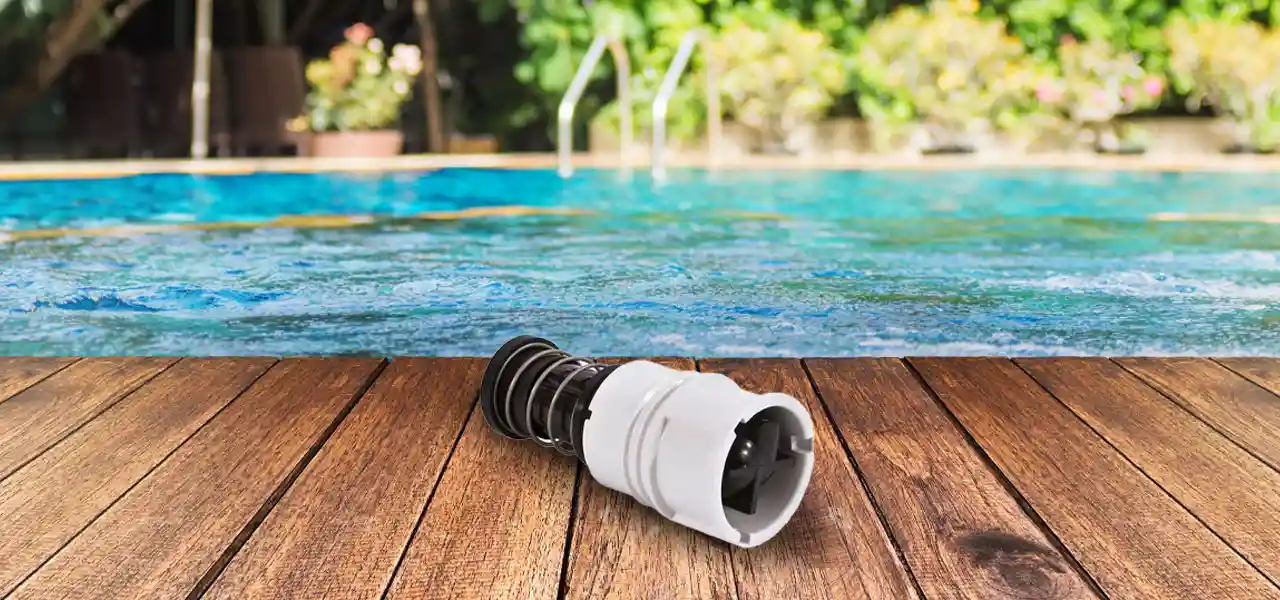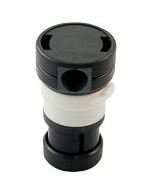FREE Standard Shipping On All Orders $100 or More!*

In-Floor Pool Cleaner Repair FAQ
In-Floor pool cleaners have been around since the 70's when they became the answer to the complaints about traditional pool cleaners. Free from hoses, whips and cords, in-floor pool cleaners operate by creating currents that drive debris towards the skimmer and main drain. They are especially popular for desert pools or pools without a lot of tree leaf litter, as they can become overwhelmed with heavy debris. Here are a few of the most common in-floor pool cleaner repair questions.
In-Floor Pool Cleaner Repair FAQ
I checked our help file, and dug up some good In-Floor Pool Cleaner Repair Q&A about common problems with in-floor pool cleaner systems.
Q: DIRT COLLECTING IN ONE AREA OF THE POOL?
If dirt has begun to collect in one area of the pool that normally stays clean, the first thing to suspect is the overall water flow and operation of the system. The last thing to check is the pop-up heads themselves.
- Check and clean pool filter
- Check and clean pump and skimmer baskets, or main drain Leaf Traps.
- Check return valves after filter for proper water flow / pressure.
- Check pop-up heads and inspect for clogs or damage.
- Check the water flow valve or distribution head for assembly and operation.
Q: SOME POP-UP HEADS ARE NOT POPPING UP?
If all of the other banks of pop-up heads are working properly, or 2 out of 3 heads are coming up, but 1 or 2 heads are not coming up, you also want to check the flow first before you start digging into the distribution valve or pop-up heads.
- Check and clean pool filter
- Check and clean pump and skimmer baskets, or main drain Leaf Traps.
- Check return valves after filter for proper water flow / pressure.
- Check pop-up heads and inspect for clogs or damage.
- Check the water flow valve or distribution head for assembly and operation.
Q: POP-UP HEADS NOT COMING DOWN?
If you are wondering if debris or coins or something can get stuck around the pop-up head, while it's in the up position, you are correct. Pop-Up heads usually come up in sets of 2-5 floor jets, and some types rotate as they pop-up. After the flow ceases to the bank of floor jets, the pop-up head should settle down neatly back into the hole. If it stays up even after water flow has moved to other jet banks, take a dip with a mask or goggles, and see what may be obstructing it. The pop-up may also have rotated out loose. You can reinstall the head by pushing down and rotating counterclockwise, although you may need the installation tool. Finally, you may have damage to the pop-up head, that is preventing the operation.
Q: SYSTEM IS STUCK ON ONE ZONE?
If your in-floor cleaner system is stuck on one zone, and is not advancing through other zones like it should, you first want to check the pressure, and secondly want to inspect the distribution valve. Make sure all systems are clean and water is flowing only to the valve (and not to the spa or wall returns). For the valve, loosen the union and loosen the band clamp to gain entry. Inspect the gear assembly, piston assembly, o-rings, balls and other parts to be sure all parts are present. Then look closely for any signs of damage or wear. And don't forget to clean the intake screen! Check the parts schematic to determine more easily what you are looking at.
Q: MULTIPLE ZONES ARE ON AT THE SAME TIME?
In-Floor cleaner systems work by directing the water into only one pipe at a time. Each of the 5 or 6 pipes feeds several pop-up heads. If your cleaner head stops rotating between zones, but gets stuck on one, or stuck in between pipes, first check water flow as described above, to be sure all the water is coming into the valve, and not flowing into a spa or waterfall. Clean the pump basket, pool filter, and some systems have a small strainer on top of the cleaner valve. If that checks out, then you can go inside the valve head by loosening the union nut and removing the clamp band or bolts. Look for missing port o-rings first of all, and then inspect the gear assembly for any obstructions, misaligned gears or missing parts.
Q: WHAT BRAND OF IN-FLOOR CLEANER DO I HAVE?
There are several notable manufacturers of in-floor cleaner systems, identifiable by the pop-up heads, and/or by the distribution valve design. They all use either a ball valve, piston valve or T valve head that cycles between the ports connected to the pipes.
- Astral Jet N Clean
- A & A Manufacturing: Magna Sweep, QuickClean, California Clean, Turbo Clean, Jet Clean, Gould
- Pool Valet: Pool Valet and Pool Valet RetroClean
- Polaris Jandy Caretaker and Caretaker 99, Caretaker 8 Ultraflex
- Paramount In-Floor Systems
Q: I THINK MY IN-FLOOR CLEANER IS LEAKING. CAN I DO A LEAK TEST?
There's a few ways to test to see if the in-floor system is leaking water. First is to shut off the cleaner system. If you have alternative wall returns or spa return, turn the valve to send all the water away from the in-floor head or distribution valve. Then note the water loss carefully during 24 hours, compensating for any rain caught in a poolside bucket. Then do the test again, running the in-floor system for 24 hours and also measure very closely any water loss and any rain during the period.
If you have water loss only when running the in-floor system, the first step I would take would be a shovel right near where the pipes enter the ground, below the water valve. Dig down a foot or two and if you hit soggy soils, you may have found the leak. If not, the next logical step would be to pressure test each individual line with water and gas, while measuring water pressure and listening for gas bubbles escaping. You may have to cut off the water valve to pressure test properly, and to try and locate which line is leaking (out of 5 or 6 pipes), and hopefully not more than one pipe is leaking.
Q: ONE OF MY IN-FLOOR PIPES IS LEAKING UNDER THE POOL?
Leaking in-floor cleaner pipes can be found and fixed in most cases, but depending on where the break is, you may exercise the option of abandoning the pipe underground, and connecting the abandoned pipe into another pipe, or to a system bypass arrangement. But don't let me scare you, usually when a pool leaks, it's not the in-floor cleaner system, but something else.
Q: SHOULD I REBUILD OR REPLACE MY VALVE HEAD?
Yes, you have the option, for many manufacturers to rebuild the valve head, with the proper rebuild kit, or replace the entire valve for a higher cost. Rebuild kits are mainly just o-ring kits, essentially, although some manufacturer kits include new pistons, or gear assemblies. Most any part you need for in-floor cleaner water valves is available, and you can in some cases, switch brands of water valve, and use it with different pop-up heads.
Q: HOW DO I REMOVE THE POP-UP HEADS?

The standard pop up head has two slots on either side of the head, to mate with the head removal tool, which is made to fit onto the end of a pool pole. The way to remove them is to twist it with the removal tool about 1/4 turn, counter-clockwise, and then let the water pressure blow it out of the hole. Then you scoop it up with the net. The tool doesn't really have enough grab to lift it out of the hole usually, unless you hook it just right. In any case, all heads just drop down into the hole and twist to install and twist to remove. When they don't want to come out easily, they may be damaged. Use the tool to remove heads (not screwdrivers), or you may damage them yourself!
SO, there you have it - 10 ways that your in-floor pool cleaner system may attempt to befuddle you, and hopefully at least 10 ways to counter the issue, troubleshoot the problem and fix your in-floor pool cleaner!